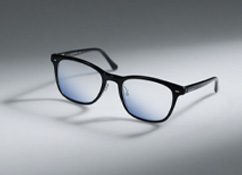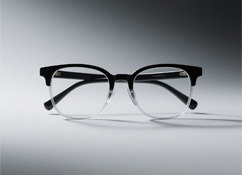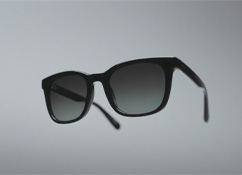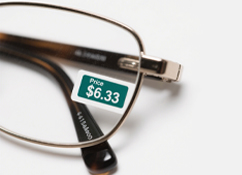Is LASIK Necessary for Mild Myopia (-1.00 to -3.00 Diopters)? Here’s What to Know
“I’m only -2.00 diopters nearsighted—do I even need surgery?” It’s a common question for people with mild myopia. But the truth is: Whether to get vision correction surgery isn’t just about how strong your prescription is. Let’s break down mild myopia and your surgical options.
What Counts as “Mild Myopia”?
Mild myopia (nearsightedness) means a prescription of -3.00 diopters or less. Even -1.00 can start affecting daily life—especially if you also have astigmatism. A lot of people with mild myopia still rely on glasses or contacts, and those can become a real hassle: They slip during sports, get in the way of makeup, or fog up when driving at night.
It’s Not Just About Your Prescription—It’s About Your Needs
Your prescription strength is just one piece of the puzzle. What really matters is your lifestyle, job, and preferences.
For example:
Career requirements: Military enlistment, police academy, or pilot training often have strict rules about glasses—many applicants with mild myopia opt for surgery to qualify.
Lifestyle perks: Athletes, swimmers, or gym-goers hate dealing with glasses slipping or contacts drying out. Surgery lets them move freely.
Style or convenience: Some people just hate how glasses feel or look. Post-surgery, they love the freedom of waking up and seeing clearly—no fumbling for lenses or frames.
When Is Vision Correction Surgery an Option?
Surgery isn’t for everyone, but you may be a candidate if:
You’re at least 18 (your eyes have stopped growing).
Your prescription is stable: It hasn’t changed by more than -0.50 diopters in the past 2 years.
You pass pre-surgical exams: These check corneal thickness, eye health, and rule out issues like dry eye or glaucoma.
Whether your myopia is mild (-1.00) or stronger, if you want to ditch glasses and meet these criteria, surgery is on the table.
Which Surgeries Work for Mild Myopia?
There are a few popular options, all effective for mild prescriptions. Here’s how they stack up:
Wavefront-Guided LASIK (Custom LASIK)
This is a laser-based surgery tailored to your eye’s unique shape.
How it works: Before surgery, a machine maps your eye’s details—like corneal shape, lens irregularities, and even tiny “wavefront” errors that cause blurriness. A laser then uses this map to reshape your cornea with pinpoint precision.
What it corrects: Up to -11.00 diopters of myopia and -4.50 diopters of astigmatism.
Who it’s best for: People who want sharp, customized vision—great for night drivers, pilots, or anyone who needs crisp detail (like photographers).
SMILE (Small Incision Lenticule Extraction)
A newer, minimally invasive laser surgery with no corneal flap.
How it works: A femtosecond laser creates a tiny, lens-shaped piece of tissue (a “lenticule”) inside the cornea. Then, a 2mm incision is made to remove it—no flap needed, which means less risk to corneal nerves.
What it corrects: Up to -10.00 diopters of myopia and -5.00 diopters of astigmatism.
Who it’s best for: Athletes, military hopefuls, or anyone tough on their eyes—its small incision makes recovery faster, and there’s less chance of dry eye afterward.
ICL Implantation (Implantable Collamer Lens)
A reversible option that adds a lens inside your eye, instead of reshaping the cornea.
How it works: A tiny incision is made at the edge of the cornea, and a thin, flexible lens is placed between your iris and natural lens. No corneal tissue is removed, so your eye’s structure stays intact. The lens can be taken out or replaced later if needed.
What it corrects: -0.50 to -18.00 diopters of myopia and up to -6.00 diopters of astigmatism.
Who it’s best for: People who want to avoid corneal reshaping—great if you have thin corneas, dry eyes, or just prefer a reversible option. It works just as well for mild myopia as it does for strong prescriptions.
FAQ: Surgery for Mild Myopia
Q: Is LASIK safe for mild myopia?
A: Yes, if you pass pre-surgical exams. The risk of complications is low, especially with modern techniques like SMILE or custom LASIK.
Q: Will my vision stay clear forever after surgery?
A: For most people, yes—if your prescription was stable before surgery. But eyes can change over time (especially after 40, when presbyopia sets in), so some people may need reading glasses later.
Q: Is surgery worth it for mild myopia?
A: It depends on you. If glasses/contacts annoy you, limit your activities, or interfere with your job, many people say the freedom is worth it. If you barely notice your glasses, it might not be necessary.
The Bottom Line
Mild myopia (-1.00 to -3.00) doesn’t require surgery, but it’s a valid option if glasses or contacts hold you back. The key is to get a thorough pre-surgical exam to check your eye health, then pick the procedure that fits your lifestyle. Whether you choose LASIK, SMILE, or ICL, the goal is the same: clear vision, on your terms.











